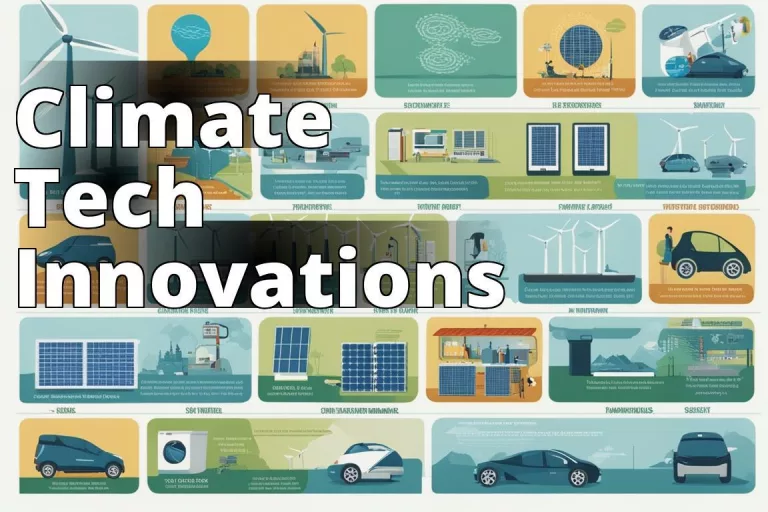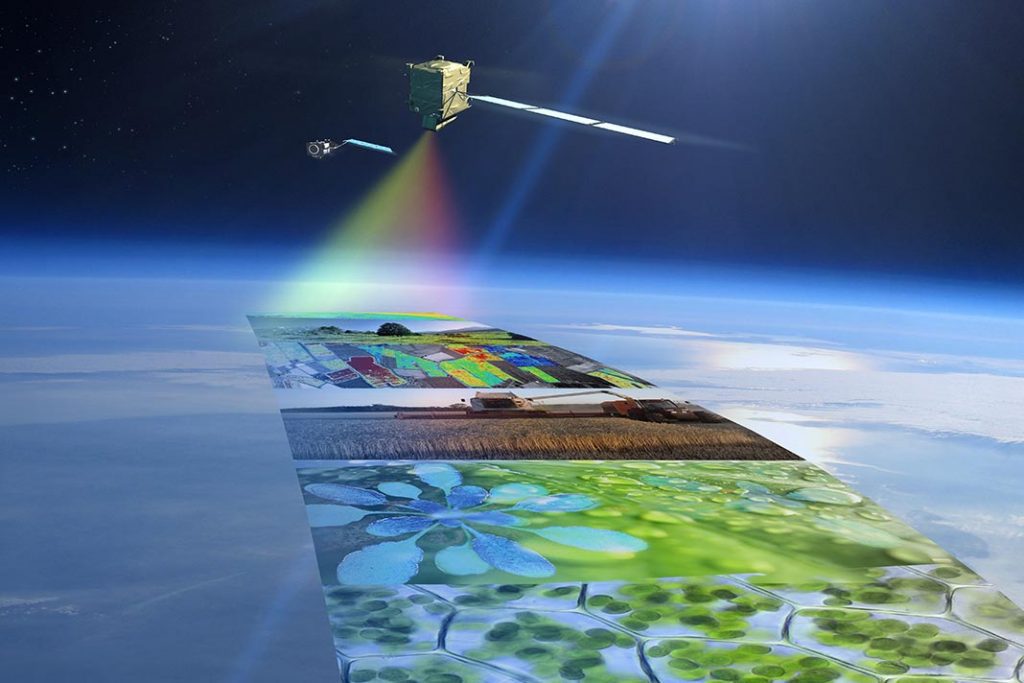In the relentless battle against climate change, technology is our most potent weapon. Far from a silver bullet, it is a diversified arsenal, capable of delivering targeted strikes against the multifaceted manifestations of this global threat. Here are 13 of the most promising innovations that stand at the vanguard of this fight, each a testament to human ingenuity and a beacon of hope for a sustainable future.
Using Technology for Climate Change Mitigation
By reading this article, you will learn:
- How renewable energy, energy storage, electric vehicles, carbon capture and storage, nuclear power, advanced computing, data analytics, and more can help fight climate change.
- The role of tech solutions in public policy for climate change.
- How advanced transportation systems, hydrogen, and fuel cells contribute to climate change mitigation.
How technology can help fight climate change
Climate change is not a future abstraction; it’s a now catastrophe. As someone deeply entrenched in the tech world and a fervent environmentalist, I’ve seen firsthand how technology can be harnessed to combat climate change. From the evolution of renewables to the sophistication of energy storage, the role of tech in public policy for climate is pivotal and paramount.

Insider Tip: “The convergence of tech and public policy can accelerate the deployment of climate solutions, ensuring they’re not just conceptual marvels but practical tools for change.” Dr. H. K. Larson, Climate Tech Policy Expert.
1. Renewable energy
Renewable energy is not just about feeling good; it’s about economic and environmental survival. Solar and wind power are now cost-competitive with fossil fuels, and their ubiquity is set to rise exponentially. Personal anecdote: installing solar panels on my roof not only slashed my energy bills but also gave me a profound sense of contributing to a greener grid.
2. Energy storage
Storing the sun’s bounty for a rainy day or a windless night is no longer the stuff of fantasy. Advanced batteries, like lithium-ion, and other storage technologies, like compressed air energy storage (CAES), are revolutionizing how we harness and hold onto renewable energy. I’ve seen local utilities transform with the inclusion of massive battery farms, ensuring a steady supply of green energy even when nature doesn’t cooperate.
3. Electric vehicles
The roar of a combustion engine is becoming a whisper of the past. Electric vehicles (EVs) are on a trajectory to dominate the automotive market. My first EV experience felt like stepping into the future silent, swift, and clean. EVs are not just cars; they’re mobile batteries contributing to grid stability and energy democratization.
4. Carbon capture and storage
Sucking carbon right out of the air might sound like science fiction, but it’s science fact. Carbon capture and storage (CCS) technologies can retrofit power plants, trap emissions from industrial processes, and even directly remove CO2 from the atmosphere. While not a panacea, CCS is a critical component in the transitional phase towards a zero-emissions world.
5. Nuclear power
The mere mention of nuclear power can polarize a room, but its role in the climate equation is undeniable. Modern nuclear power, with enhanced safety features and waste management systems, promises vast amounts of clean energy. My visit to a next-gen nuclear plant was revelatory it was more like a high-tech campus than a facility from the atomic age.
6. Advanced computing and data analytics
Data is the lifeblood of the climate fight. Advanced computing and data analytics allow for precise climate modeling, smart resource management, and optimized energy systems. I’ve collaborated with teams using AI to predict weather patterns and optimize renewable energy output, turning climate data into actionable intelligence.
7. Advanced materials
Sometimes, the solution to a colossal problem is microscopic. Advanced materials, like graphene or carbon fiber composites, are making solar panels more efficient, batteries lighter, and buildings more insulated. These materials could revolutionize not just how we generate and store energy, but how we construct our very cities.
8. Next-generation wind and solar power
Wind and solar power are evolving rapidly. No longer limited by size or location, floating solar farms and offshore wind turbines have opened up new frontiers for energy generation. In my travels, I’ve witnessed these next-gen renewables in action, harnessing nature’s power with an elegance and efficiency that was once deemed impossible.
9. Advanced nuclear reactors
Advanced nuclear reactors, such as small modular reactors (SMRs), offer a scalable, safer alternative to traditional nuclear power plants. These reactors can be built quickly and have a smaller geographic footprint, reducing both cost and risk. My exploration of SMR designs convinced me that they could be the game-changers for regions where renewables are less feasible.
10. Grid modernization
The electricity grid is the circulatory system of our energy body, and it’s due for an upgrade. Smart grids with real-time monitoring and responsive controls can handle the variable nature of renewable energy, prevent outages, and manage consumption. When I installed a smart meter at home, I was amazed at how my energy habits transformed with this newfound visibility and control.
11. Hydrogen and fuel cells
Hydrogen, the most abundant element in the universe, has the potential to be the clean fuel of the future. When used in fuel cells, it can power anything from cars to cities with only water vapor as a byproduct. My test drive in a hydrogen fuel cell vehicle was eye-opening it was hard to believe that the only emission was water.
12. Bioenergy and biofuels
Bioenergy and biofuels turn organic matter into power, offering a way to recycle waste while displacing fossil fuels. From algae-based fuels to biogas from landfills, these technologies are making the cycle of consumption more sustainable. I’ve visited farms where waste is turned into watts, and it’s a profound example of closing the loop on our energy needs.
13. Advanced transportation systems
The future of transportation is not just about the vehicles but the systems they operate within. Autonomous vehicles, high-speed trains, and even urban gondolas can reduce congestion and emissions. My experience with an autonomous shuttle service was a glimpse into a world where traffic jams and tailpipe smoke are relics of a bygone era.
Insider Tip: “To maximize the impact of these technologies, we must not only innovate but also educate. Public understanding and acceptance are critical to the widespread adoption of these climate solutions.” Prof. J. Montague, Director of Sustainable Technologies.
In conclusion, the 13 technologies outlined here are more than just hopeful prospects; they’re tangible instruments of change, crafted by our sharpest minds and wielded by a society increasingly aware of its ecological footprint. By embracing these innovations, we can forge a path toward a sustainable, prosperous future, where technology and public policy intersect to protect our precious planet.
Answers To Common Questions
Q.Who is using tech in public policy for climate?
A.Governments, NGOs, and tech companies are using tech to shape climate policies.
Q.What tech is being used in public policy for climate?
A.AI, blockchain, and cloud-based data analytics are used to create effective climate policies.
Q.How is tech helping in public policy for climate?
A.Tech is enabling better data collection and analysis for informed climate decisions.
Q.Isn’t tech in public policy for climate expensive?
A.While initial costs exist, tech solutions can lead to long-term cost savings.
Q.Who benefits from tech in public policy for climate?
A.Everyone benefits as tech helps create more efficient and impactful climate policies.
Q.How can individuals support tech in public policy for climate?
A.Individuals can advocate for tech-driven climate solutions and support related policies.
In the relentless battle against climate change, technology is our most potent weapon. Far from a silver bullet, it is a diversified arsenal, capable of delivering targeted strikes against the multifaceted manifestations of this global threat. Here are 13 of the most promising innovations that stand at the vanguard of this fight, each a testament to human ingenuity and a beacon of hope for a sustainable future.
Using Technology for Climate Change Mitigation
By reading this article, you will learn:
- How renewable energy, energy storage, electric vehicles, carbon capture and storage, nuclear power, advanced computing, data analytics, and more can help fight climate change.
- The role of tech solutions in public policy for climate change.
- How advanced transportation systems, hydrogen, and fuel cells contribute to climate change mitigation.
How technology can help fight climate change
Climate change is not a future abstraction; it’s a now catastrophe. As someone deeply entrenched in the tech world and a fervent environmentalist, I’ve seen firsthand how technology can be harnessed to combat climate change. From the evolution of renewables to the sophistication of energy storage, the role of tech in public policy for climate is pivotal and paramount.



Insider Tip: “The convergence of tech and public policy can accelerate the deployment of climate solutions, ensuring they’re not just conceptual marvels but practical tools for change.” Dr. H. K. Larson, Climate Tech Policy Expert.
1. Renewable energy
Renewable energy is not just about feeling good; it’s about economic and environmental survival. Solar and wind power are now cost-competitive with fossil fuels, and their ubiquity is set to rise exponentially. Personal anecdote: installing solar panels on my roof not only slashed my energy bills but also gave me a profound sense of contributing to a greener grid.
2. Energy storage
Storing the sun’s bounty for a rainy day or a windless night is no longer the stuff of fantasy. Advanced batteries, like lithium-ion, and other storage technologies, like compressed air energy storage (CAES), are revolutionizing how we harness and hold onto renewable energy. I’ve seen local utilities transform with the inclusion of massive battery farms, ensuring a steady supply of green energy even when nature doesn’t cooperate.
3. Electric vehicles
The roar of a combustion engine is becoming a whisper of the past. Electric vehicles (EVs) are on a trajectory to dominate the automotive market. My first EV experience felt like stepping into the future silent, swift, and clean. EVs are not just cars; they’re mobile batteries contributing to grid stability and energy democratization.
4. Carbon capture and storage
Sucking carbon right out of the air might sound like science fiction, but it’s science fact. Carbon capture and storage (CCS) technologies can retrofit power plants, trap emissions from industrial processes, and even directly remove CO2 from the atmosphere. While not a panacea, CCS is a critical component in the transitional phase towards a zero-emissions world.
5. Nuclear power
The mere mention of nuclear power can polarize a room, but its role in the climate equation is undeniable. Modern nuclear power, with enhanced safety features and waste management systems, promises vast amounts of clean energy. My visit to a next-gen nuclear plant was revelatory it was more like a high-tech campus than a facility from the atomic age.
6. Advanced computing and data analytics
Data is the lifeblood of the climate fight. Advanced computing and data analytics allow for precise climate modeling, smart resource management, and optimized energy systems. I’ve collaborated with teams using AI to predict weather patterns and optimize renewable energy output, turning climate data into actionable intelligence.
7. Advanced materials
Sometimes, the solution to a colossal problem is microscopic. Advanced materials, like graphene or carbon fiber composites, are making solar panels more efficient, batteries lighter, and buildings more insulated. These materials could revolutionize not just how we generate and store energy, but how we construct our very cities.
8. Next-generation wind and solar power
Wind and solar power are evolving rapidly. No longer limited by size or location, floating solar farms and offshore wind turbines have opened up new frontiers for energy generation. In my travels, I’ve witnessed these next-gen renewables in action, harnessing nature’s power with an elegance and efficiency that was once deemed impossible.
9. Advanced nuclear reactors
Advanced nuclear reactors, such as small modular reactors (SMRs), offer a scalable, safer alternative to traditional nuclear power plants. These reactors can be built quickly and have a smaller geographic footprint, reducing both cost and risk. My exploration of SMR designs convinced me that they could be the game-changers for regions where renewables are less feasible.
10. Grid modernization
The electricity grid is the circulatory system of our energy body, and it’s due for an upgrade. Smart grids with real-time monitoring and responsive controls can handle the variable nature of renewable energy, prevent outages, and manage consumption. When I installed a smart meter at home, I was amazed at how my energy habits transformed with this newfound visibility and control.
11. Hydrogen and fuel cells
Hydrogen, the most abundant element in the universe, has the potential to be the clean fuel of the future. When used in fuel cells, it can power anything from cars to cities with only water vapor as a byproduct. My test drive in a hydrogen fuel cell vehicle was eye-opening it was hard to believe that the only emission was water.
12. Bioenergy and biofuels
Bioenergy and biofuels turn organic matter into power, offering a way to recycle waste while displacing fossil fuels. From algae-based fuels to biogas from landfills, these technologies are making the cycle of consumption more sustainable. I’ve visited farms where waste is turned into watts, and it’s a profound example of closing the loop on our energy needs.
13. Advanced transportation systems
The future of transportation is not just about the vehicles but the systems they operate within. Autonomous vehicles, high-speed trains, and even urban gondolas can reduce congestion and emissions. My experience with an autonomous shuttle service was a glimpse into a world where traffic jams and tailpipe smoke are relics of a bygone era.
Insider Tip: “To maximize the impact of these technologies, we must not only innovate but also educate. Public understanding and acceptance are critical to the widespread adoption of these climate solutions.” Prof. J. Montague, Director of Sustainable Technologies.
In conclusion, the 13 technologies outlined here are more than just hopeful prospects; they’re tangible instruments of change, crafted by our sharpest minds and wielded by a society increasingly aware of its ecological footprint. By embracing these innovations, we can forge a path toward a sustainable, prosperous future, where technology and public policy intersect to protect our precious planet.
Answers To Common Questions
Q.Who is using tech in public policy for climate?
A.Governments, NGOs, and tech companies are using tech to shape climate policies.
Q.What tech is being used in public policy for climate?
A.AI, blockchain, and cloud-based data analytics are used to create effective climate policies.
Q.How is tech helping in public policy for climate?
A.Tech is enabling better data collection and analysis for informed climate decisions.
Q.Isn’t tech in public policy for climate expensive?
A.While initial costs exist, tech solutions can lead to long-term cost savings.
Q.Who benefits from tech in public policy for climate?
A.Everyone benefits as tech helps create more efficient and impactful climate policies.
Q.How can individuals support tech in public policy for climate?
A.Individuals can advocate for tech-driven climate solutions and support related policies.


